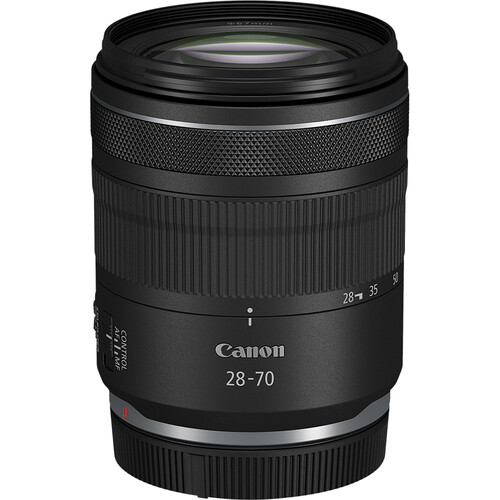
Canon 28-70mm f/2.8: B&H Photo / Amazon / Adorama
Canon published an interview with the Canon 28-70mm f/2.8 development team. Here is the translated recap by digicame-info:
- The RF28-70mm F2.8 IS STM was conceived with the idea that there must be users who want a fixed F2.8 lens but cannot afford an L lens. In the age of mirrorless cameras, where camera bodies are becoming more compact, we started this product with the hope that those who have been hesitant to use a fixed F2.8 lens, thinking “It’s nice, but it’s big and heavy,” will be able to use it.
- The only difference with the retractable type is the mechanism, and there is no difference in image quality itself. When the overall length is reduced, the volume is reduced, so it can be made lighter. Initially, the simulation was done at around 540g, but the actual product was less than 500g, making it lighter than expected.
- The larger the UD lens, the higher the selling price, so they are usually placed on the inside where the lens diameter is smaller, but in order to achieve a compact size and high performance, we decided to use a large UD lens for the front element.
- The mechanical system has certainly evolved. If the first four RF lenses were the first generation, then they have continued to evolve since then, and with this lens I get the feeling that we have entered a new generation.
- It is common knowledge that equipping an interchangeable lens with IS makes it larger and heavier, but in fact, the RF28-70mm F2.8 IS STM is not that large. The EF24-70mm F2.8L II USM does not have IS, but the RF28-70mm F2.8 IS STM, which does have IS, is actually significantly smaller and lighter. This is due to the evolution of the IS unit.
- When an IS lens is moved, the mechanism that supports it inevitably becomes distorted. This time, the center of gravity of each part that makes up the IS was precisely calculated and their position optimized. The parts have been rearranged so that the centers of gravity are perfectly aligned, resulting in an ideal design. IS is a technology that has been handed down within Canon for many years, but something revolutionary has happened here. The ideal design has made it possible to make it compact, and we have been able to keep the weight at less than 500g for this size. The head of the optical design department repeatedly asked us, “Can IS really be made that small?”
- The focus mechanism, called a “lead screw type STM (Stepping Motor),” has also evolved. The focus mechanism installed in this lens is so powerful that it can move lenses that are about twice as heavy as the lenses that were previously moved. Higher-end models have used USMs, which are powerful but large and expensive. The fact that it has evolved to be able to move lenses about twice as heavy with a small STM contributes to the compactness of this lens.
- A normal STM is an open control. Simply put, the motor rotates at a set speed and stops at a set position. It’s a very simple control. The STM this time has a sensor that reads the motor’s rotation speed. Telephoto zoom and macro lenses rarely have focus mechanisms with this kind of advanced control, but this is the first time they’ve been installed in a standard zoom.
- Things that were not possible with the EF mount due to the small amount of communication traffic have become possible with the RF mount thanks to its large capacity and high speed communication. For example, electronic correction of aberrations and IS coordinated control. The amount of data that can be written to the lens itself has also increased, and is dozens of times larger than previous mounts. This is the advantage of the “EOS R system.”
via Canon.jp